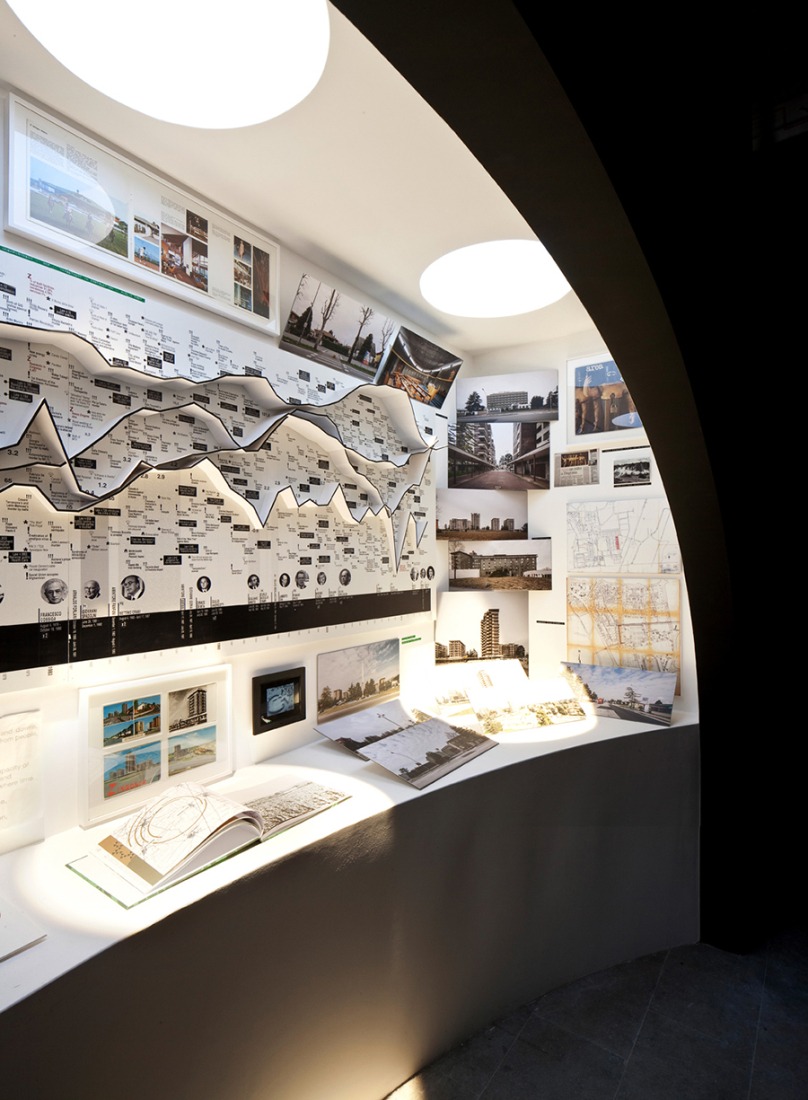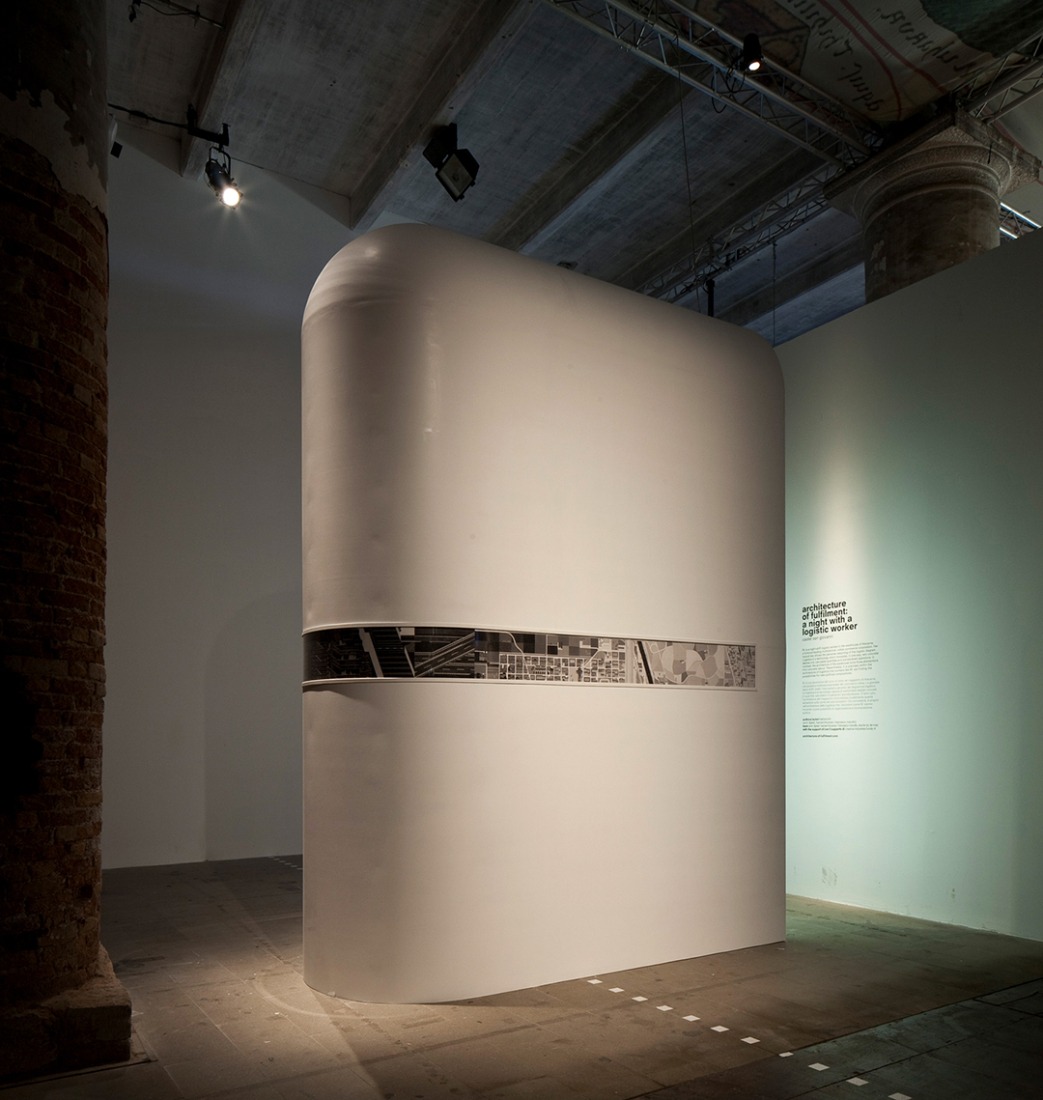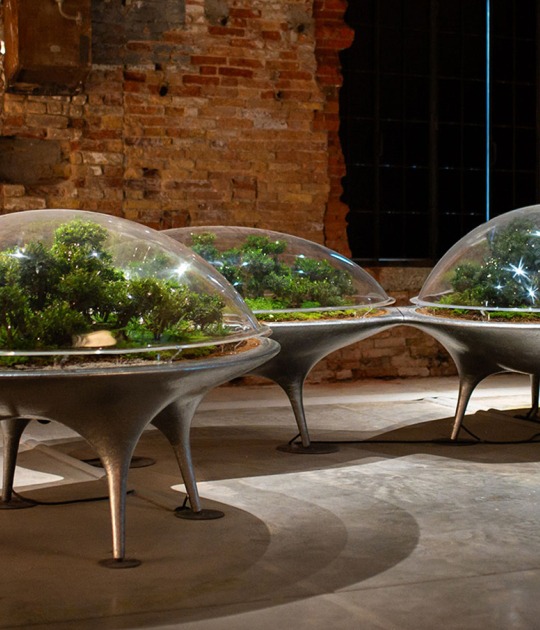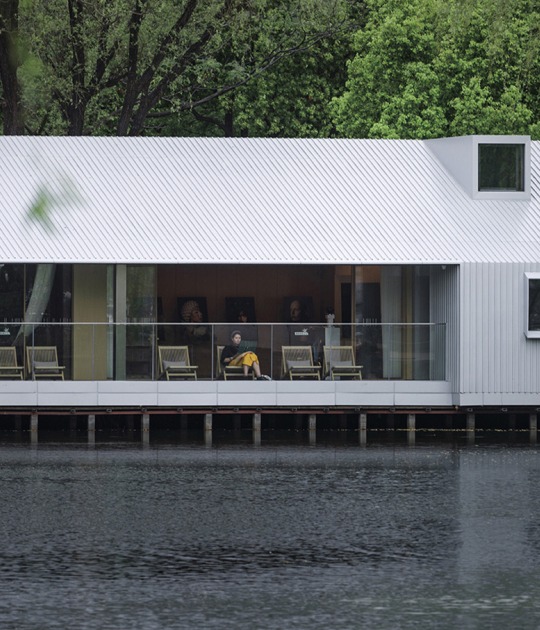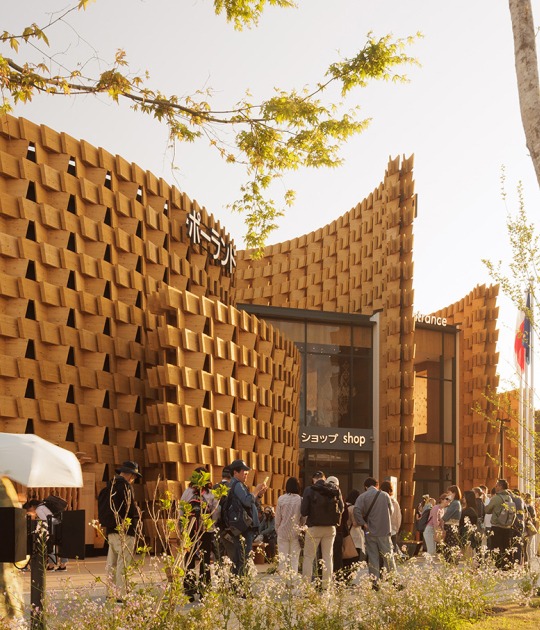Dance, Music, Theatre, and Cinema have their own spaces in Monditalia, at the Corderie dell’Arsenale, in which to present elements of complex life and spaces in which architecture may be imagined or planned. The Dance, Music, Theatre and Cinema Directors accepted the challenge and are developing most of their programs (Festival and College) within the Corderie dell’Arsenale in the Architecture Exhibition. Never has all the Biennale been in the one exhibition so much as this year.
The physical presence of the Arsenale is interpreted as an theatre set, dedicated to a single theme – Italy. Collectively representing a comprehensive portrait of the host country, the exhibitions and a series of theatrical productions explore architecture, politics, economics, religion, technology, industry, to form a single narrative throughout the Corderie. Although, in fact, reminds us more to the front door of the Seville Fair.
Exhibition contributors listed in order of location, following their geographical coordinates. Representing a scan that defines the exhibition geography in itself, the 41projects will cross the Italian territory from South to North, and more extensively from Africa to the Alps and Europe.

Luminaire. OMA in collaboration with Swarovski. Monditalia. Corderie dell’Arsenale. 14.Mostra Internazionale di Architettura, Fundamentals, la Biennale di Venezia. Photography © Gilbert McCarragher. Courtesy of la Biennale di Venezia. Click above to see larger image.
1. Italian Ghosts
DAAR
32° 06’ 19’’ N / 20° 04’ 48’’ E
2. Post-frontier
Giacomo Cantoni, Pietro Pagliaro
34° 39’ 05’’ N / 18° 40’ 36’’ E
3. Intermundia
Ana Dana Beroš
35° 29’ 57’’ N / 12° 36’ 18’’ E
4. Theaters of Democracy
XML
37° 04’ 28’’ N / 15° 16’ 44’’ E
5. The Third Island Ag ‘64 ‘94 ‘14
Antonio Ottomanelli
38° 26’ 29’’ N / 15° 54’ 01’’ E
6. The Architecture of Hedonism - Three Villas on the Island of Capri
Martino Stierli, Hilar Stadler, Nils Nova with a contribution by Francesco Vezzoli
40° 33’ 02’’ N / 14° 14’ 26’’ E
7. Legible Pompeii
Lucia Allais, MOS
40° 45’ 06’’ N / 14° 28’ 53’’ E
8. Pompeii, the Secret Museum, and the Sexopolitical Foundations of the Modern European Metropolis
Beatriz Preciado
40° 45’ 06’’ N / 14° 28’ 53’’ E
9. Antonioni’s Villa
Will McLean with an essay by Niklas Maak
41° 03’ 22’’ N / 08° 56’ 52’’ E
10. La Maddalena
Ila Bêka & Louise Lemoine
41° 12’ 53’’ N / 09° 24’ 21’’ E
11. Cinecittà Occupata
Ignacio G. Galán
41° 51’ 07’’ N / 12° 34’ 31’’ E
12. 99 Dom-Ino
Space Caviar
41° 52’ 38’’ N / 12° 34’ 34’’ E
13. A Minor History within the Memories of a National Heritage
Stefano Graziani
41° 53’ 09’’ N / 12° 28’ 35’’ E
14. All Roads Lead to Rome. Yes, but where exactly?
Teresa Cos
41° 53’ 36’’ N / 12° 28’ 58’’ E
15. Rome - San Giacomo Hospital the Ghost Block ofGiambattista Nolli
stARTT
41° 54’ 27’’ N / 12° 28’ 39’’ E
16. L’Aquila’s Post-quake Landscapes (2009–2014)
Andrea Sarti, Claudia Faraone
42° 21’ 05’’ N / 13° 23’ 56’’ E
17. Assisi Laboratory
AMO, Giampiero Mariottini, Marco Sammicheli
43° 04’ 26’’ N / 12° 36’ 25’’ E
18. The Room of Peace (Siena)
Bas Princen
43° 19’ 02’’ N / 11° 19’ 54’’ E
19. Superstudio. The Secret Life of the ContinuousMonument
Gabriele Mastrigli
43° 46’ 19’’ N / 11° 16’ 08’’ E
20. Space Electronic: then and now
Catharine Rossi
43° 46’ 25’’ N / 11° 14’ 47’’ E
21. Ground Floor Crisis
Matteo Ghidoni
43° 46’ 26’’ N / 11° 15’ 15’’ E
22. Biblioteca Laurenziana
AMO, Charlie Koolhaas, Rem Koolhaas, Manuel Orazi
43° 46’ 29’’ N / 11° 15’ 14’’ E
23. The Remnants of the Miracle
Luka Skansi
43° 53’ 07’’ N / 10° 41’ 10’’ E
24. Nightswimming: Discotheques in Italy from the 1960s until now
Giovanna Silva
44° 00’ 02’’ N / 12° 39’ 21’’ E
25. Dancing Around Ghosts - Milano Marittima’s panem et circenses
de Gayardon Bureau
44° 16’ 38’’ N / 12° 20’ 54’’ E
26. Urbs Oblivionalis. Urban Spaces and Terrorism in Italy
Elena Pirazzoli, Roberto Zancan
44° 30’ 21’’ N / 11° 20’ 36’’ E
27. The Landscape has no Rear
Nicola Russi
44° 43’ 52’’ N / 10° 37’ 45’’ E
28. Tortona Stories
Brendan Cormier, Fabrizio Gallanti
44° 53’ 40’’ N / 08° 51’ 48’’ E
29. Countryside Worship
Matilde Cassani
44° 55’ 33’’ N / 09° 54’ 43’’ E
30. Architecture of Fulfilment: a Night with a Logi
stic WorkerBehemoth
45° 03’ 19’’ N / 09° 26’ 01’’ E
31. La Fine del Mondo
Marco Fusinato, Felicity D. Scott, Mark Wasiuta
45° 04’ 11’’N / 07° 40’ 14’’ E
32. The Business of People
Ramak Fazel
45° 04’ 11’’N / 07° 40’ 14’’ E
33. 152 Mediterranea
l’AUC, Cédric Libert, Thomas Raynaud
45° 24’ 27’’ N / 12° 20’ 25’ E
34. Effimero: or the Postmodern Italian Condition
Léa-Catherine Szacka
45° 26’ 02’’ N / 12° 21’ 16’’ E
35. Immediate Surroundings. Residences of Italian Mafia Organizations
Tommaso Bonaventura, Alessandro Imbriaco, Fabio Severo
45° 27’ 01’’ N / 09° 08’ 52’’ E
36. Radical Pedagogies: ACTION-REACTION-INTERACTION
Beatriz Colomina, Britt Eversole, Ignacio G. Galán, Evangelos Kotsioris, Anna-Maria Meister, Federica Vannucchi, Amunátegui Valdés Architects, Smog.tv
45° 28’ 20’’ N / 09° 10’ 24’’ E
37. Sales Oddity. Milano 2 and the Politics of Direct-to-home TV Urbanism
Andrés Jaque/Office for Political Innovation
45° 29’ 56’’ N / 09° 15’ 57’’ E
38. Z! Zingonia, mon amour
Argot ou La Maison Mobile, Marco Biraghi
45° 35’ 31’’ N / 09° 36’ 21’’ E
39. Designing the Sacred
Marco Sammicheli, Andrea Dall’Asta, Giuliano Zanchi
45° 41’ 51’’ N / 09° 40’ 14’’ E
40. Italian Limes
Folder
46° 45’ 50’’ N / 10° 53’ 20’’ E
41. Alps
Armin Linke
47° 15’ 49’’ N / 11° 23’ 53’’ E

Luminaire. OMA in collaboration with Swarovski. Monditalia. Corderie dell’Arsenale. 14.Mostra Internazionale di Architettura, Fundamentals, la Biennale di Venezia. Photography © Gilbert McCarragher. Courtesy of la Biennale di Venezia. Click above to see larger image.











